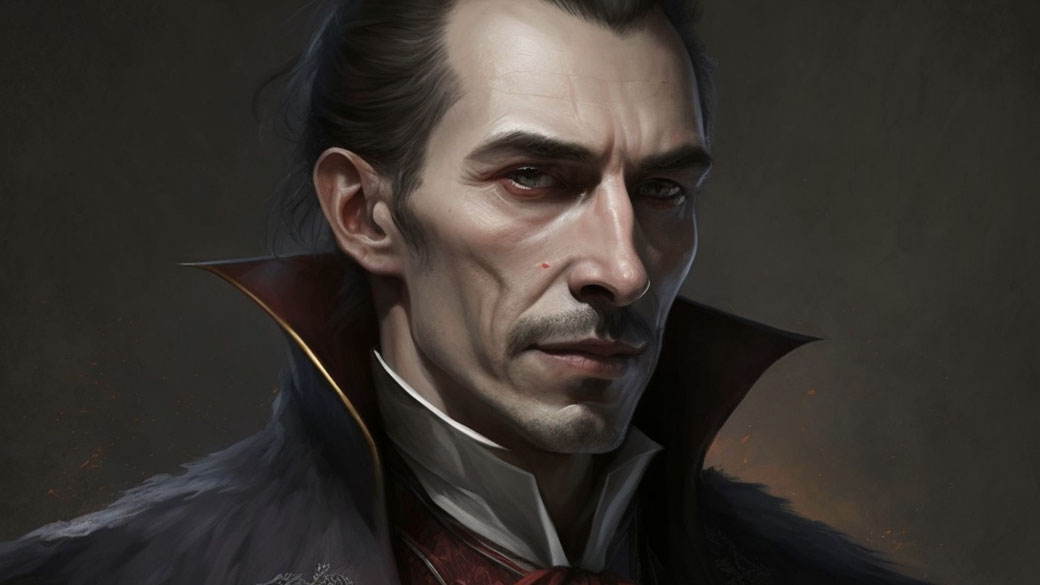Vlad the Impaler: The real-life monster who inspired Bram Stoker's 'Dracula'

In fifteenth-century Eastern Europe, Vlad III of Wallachia reigned brutally during a time of political unrest. He earned a reputation for cruelty that was almost unmatched by his contemporaries.
Centuries later, the Irish author Bram Stoker would draw upon Vlad's fearsome reputation to create the vampire count who stalked the pages of Dracula, published in 1897.
Ottoman Captivity and Rise to Power
Born around 1431 in Transylvania, Vlad was the second son of Vlad II Dracul, a member of the Order of the Dragon, a chivalric order founded by Sigismund of Luxembourg to defend Christendom against the Ottoman Turks.
The family name, Dracul, derived from the Latin draco, meaning dragon, and gave rise to Vlad III’s nickname, Dracula, or “son of the dragon.”
After his father pledged allegiance to the Ottoman Sultan Murad II, Vlad and his younger brother Radu were handed over as political hostages.
Their time in the Ottoman court exposed them to Islamic customs and military strategy; it also immersed them in the empire’s complicated politics that they would later face.
However, Vlad never forgave the Ottomans for his captivity.
Upon returning to Wallachia, Vlad found a principality hampered by internal conflicts and frequent invasions.
In 1448, he briefly seized the throne with Ottoman support, but rivals expelled him within months.
His real opportunity arrived in 1456 when, with Hungarian backing, he reclaimed the Wallachian throne and began a campaign of strict central control.
Determined to crush the influence of the boyar nobility who had betrayed his father, Vlad invited many of them to a feast in Târgoviște.
After a brief meal, he ordered the impalement of the older lords and forced the younger ones into hard labour constructing his fortress at Poenari.
The message was unmistakable: loyalty was mandatory, and disloyalty meant death.
Rule of Terror and Fall from Power
As ruler, Vlad enforced a harsh code of justice across Wallachia. He dealt with thieves, adulterers, beggars, and enemies of the state through public executions by impalement.
This method involved victims being pierced with a wooden stake inserted through the body, often through the rectum or abdomen, and left to die slowly.
Foreign travellers, such as the Saxon merchants from Brașov, recorded tales of entire forests of corpses erected as warnings.
The most notorious of these events occurred in 1462 during a renewed Ottoman invasion.
Sultan Mehmed II, who had recently conquered Constantinople, marched on Wallachia with a large army.
However, as he approached Târgoviște, he found an estimated twenty thousand impaled corpses lining the road.
The horror discouraged the Ottoman soldiers and contributed to their hesitation, though the campaign continued with further skirmishes and moves.
Though this did not end the conflict, it became one of the most famous examples of mind games in early modern Europe.
By the time of his second reign’s collapse later that same year, Vlad had become both feared and respected throughout the region.
His alliance with Matthias Corvinus, King of Hungary, later faltered. Political plotting by Saxon merchants and boyars led to Vlad’s imprisonment in Hungary for over a decade, though the conditions of his captivity varied and at times allowed him limited freedom.
During his captivity, he attempted to rebuild his image through religious devotion and diplomatic correspondence.
Yet even then, reports of his cruelty continued to circulate through Hungarian and German pamphlets, often illustrated with woodcuts depicting the horrors of impalement and decapitation; separate images revealed victims undergoing disembowelment.
These printed leaflets reached a wide audience. They reinforced Vlad’s monstrous reputation and linked him in the minds of many with images of demons.
Final Return and Death
He returned to power briefly in 1476, but rivals assassinated him within the year.
The exact circumstances of his death remain uncertain, though Ottoman sources claimed they sent his head to Constantinople as proof of victory.
His body was believed to have been buried at the monastery of Snagov, though archaeological investigations have yet to confirm the location of his remains.

Centuries after his death, tales of Vlad the Impaler’s brutality remained vivid in Romanian folklore and European imagination.
Bram Stoker never visited Eastern Europe, but he came across the name "Dracula" in a book by William Wilkinson, a British diplomat.
Fascinated by the name’s association with “devil” and Transylvania, Stoker borrowed it for his fictional vampire, even though the historical Vlad bore no relation to the undead.
Nevertheless, the connection between the bloodthirsty prince of Wallachia and the fictional Count Dracula became firmly rooted in popular culture.
What do you need help with?
Download ready-to-use digital learning resources
Copyright © History Skills 2014-2025.
Contact via email
With the exception of links to external sites, some historical sources and extracts from specific publications, all content on this website is copyrighted by History Skills. This content may not be copied, republished or redistributed without written permission from the website creator. Please use the Contact page to obtain relevant permission.





